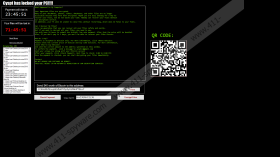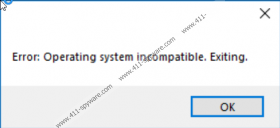Cyspt Ransomware Removal Guide
The truth is that if you have encountered one ransomware program before, you more or less know what to expect from the rest of them. Likewise, Cyspt Ransomware might look like something new and unfamiliar, but this application follows the usual ransomware infection steps. Therefore, the bottom line is that you must remove Cyspt Ransomware from your computer immediately. It might be challenging to restore your files, but you should try everything before you decide to start accumulating your data collection anew. Also, do not hesitate to address professionals if need be.
Our research team cannot tell how this program spreads around. It is not a very “popular” infection, and it keeps a rather low profile. However, it is very likely that this program spreads through phishing attacks and various exploits. In other words, users allow Cyspt Ransomware to enter their systems, but they are not aware of that.
For example, phishing attacks employ spam emails to reach their targets. While most of the spam can be easily filtered into the Junk folder, some email service providers may not have an algorithm sophisticated enough to do that. Hence, spam that carries Cyspt Ransomware might light into your main inbox. What’s more, spam email that carries ransomware often looks authentic and believable. Some of the messages might even look like they were written by an individual, lulling the user into the impression of false security. And the moment they download and open the attached file, ransomware is installed on their system.
Needless to say, it is possible to avoid Cyspt Ransomware and other similar infection, but that requires awareness on your side. Any email that urges you to take action immediately should be considered suspicious. Also, if the email comes with an attached file, you should think twice before you click to open it. If you want to be 100% sure that the file you are about to open is safe, you can always scan the file in question with a security tool.
If the user fails to protect their system from Cyspt Ransomware, this infection slithers into the target computer and launches the file encryption. The moment this program starts running on your system, it opens a message box that says the following:
Error: Operating system incompatible. Exiting.
After that, the program encrypts the files you keep on your Desktop, the My Pictures, My Music, and Downloads folders. If you haven’t backed up the data you keep in the mentioned directories; you might face various challenges trying to restore it.
The most important thing is not to be swayed by the messages displayed by Cyspt Ransomware. This program will tell you that you have to contact the people behind it so you could pay the ransom. Supposedly, paying the ransom would help you restore your files, but that is highly unlikely. What’s more, this infection was released back in January, so it is far more likely that there is a public decryption tool for it somewhere out there, and its control and command center is dead.
Please follow the instructions below to remove Cyspt Ransomware from your computer. However, it would also be a good idea to employ a reliable antispyware program to terminate the infection if you do not feel confident enough to deal with it on your own.
Also, if you have copies of your files on an external hard drive or a cloud drive, you can always delete the encrypted files and simply transfer the copies back into your PC. Finally, please find out more about phishing and other potential ransomware distribution methods to avoid similar intruders in the future.
How to Remove Cyspt Ransomware
- Press Ctrl+Shift+Esc and Task manager will open.
- Click Processes and highlight suspicious processes. Click End Process.
- Remove recently downloaded files from Desktop.
- Go to the Downloads folder.
- Delete the most recently downloaded files.
- Press Win+R and type %TEMP%. Click OK.
- Remove the most recently downloaded files from the directory.
- Press Win+R and type regedit. Click OK.
- Go to HKEY_CURRENT_USER\Software\Microsoft\Windows\CurrentVersion\Run.
- On the right side, right-click a random-name value and select to delete it.
- Press Win+R again and type %AppData%. Click OK.
- Delete a random-name EXE file from the directory.
Cyspt Ransomware Screenshots:


Cyspt Ransomware technical info for manual removal:
Files Modified/Created on the system:
| # | File Name | File Size (Bytes) | File Hash |
|---|---|---|---|
| 1 | fab4f72a1645e8520887f966b04fc557e2517c612c9a606594964c5df7857fc6.exe | 750080 bytes | MD5: 25c923bcfda1c7d97fb1b48b8b6e6ad4 |
Memory Processes Created:
| # | Process Name | Process Filename | Main module size |
|---|---|---|---|
| 1 | fab4f72a1645e8520887f966b04fc557e2517c612c9a606594964c5df7857fc6.exe | fab4f72a1645e8520887f966b04fc557e2517c612c9a606594964c5df7857fc6.exe | 750080 bytes |

